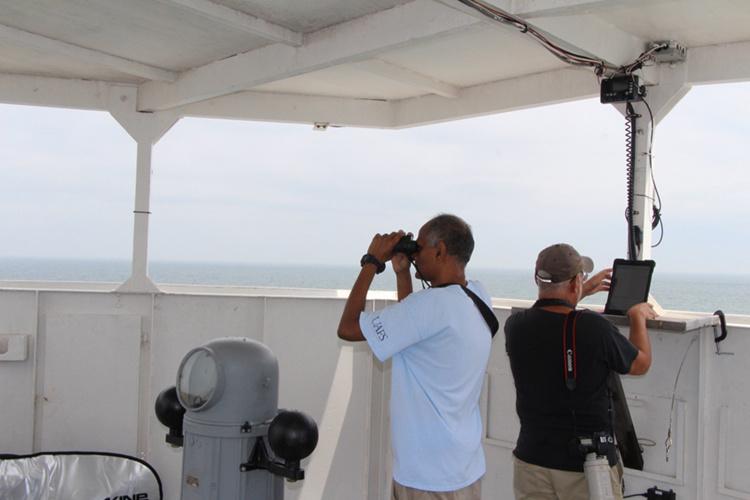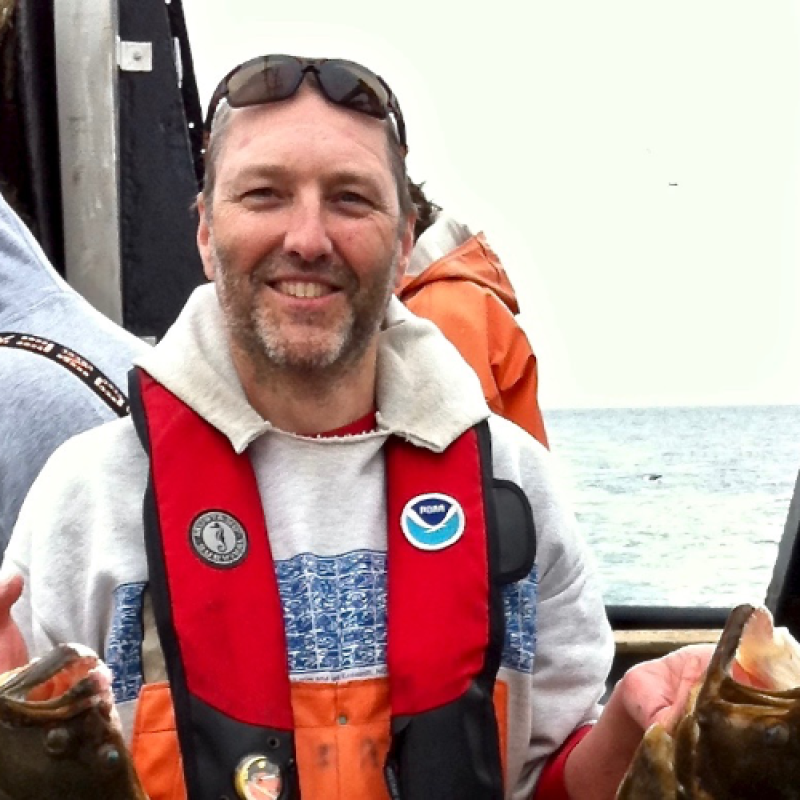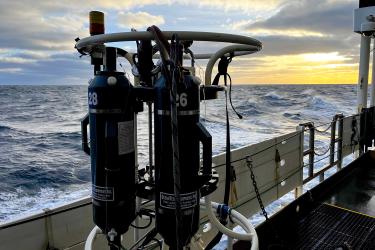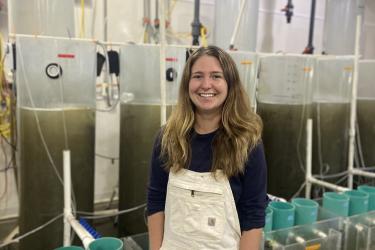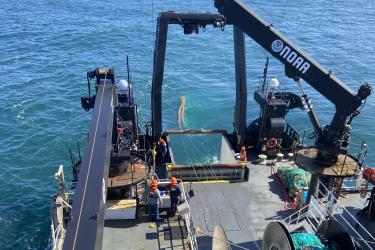Our summer Ecosystems Monitoring cruise is now in full swing. We have a diverse science crew, with a variety of backgrounds, for this trip. Tamara Holzwarth-Davis and I work in the Northeast Fisheries Science Center’s Oceans and Climate Branch, which runs the EcoMon surveys. Joining us are two ocean optics researchers: Kyle Turner from the University of Rhode Island and Charles Kovach from NOAA’s National Environmental Satellite, Data and Information Service. Two seabird observers funded by the Bureau of Ocean Energy Management, Chris Vogel and Allison Black, are also aboard. Ragupathy Kannan from the NOAA Teacher at Sea program and the University of Arkansas Fort Smith is a terrestrial ecologist and birder who will be working primarily with the observers. And we have four volunteers, Jessica Lindsey from the Maine Maritime Academy, Jonathan Maurer from the University of Maine, David Caron from Boston University, and Caleb Blanton, a recent graduate of Texas A&M University currently at Woods Hole Oceanographic Institution.
EcoMon — a shorthand name for this cruise — is designed to monitor water temperature and salinity, the distribution of fish larvae and eggs, and zooplankton across a wide area of the continental shelf from North Carolina to the Gulf of Maine. While some changes to the sampling program have been made over time, this area has been sampled with the same general methods since the 1970s.

Conductivity, temperature, and depth (CTD) casts are made to collect temperature and salinity data throughout the water column. A CTD instrument can be paired with other gear to collect data for multiple purposes. For example, we can collect temperature and salinity data during our plankton sampling net collections. This allows us to match that information with the plankton species that we catch in our nets, enabling us to monitor what temperature and salinity habitats species are using and to track whether that has changed over the last 45 years.
We also use CTDs when we collect water samples with a rosette sampler. A CTD mounted on the instrument allows us to measure water chemistry and nutrient levels from samples collected at different water depths. Temperature, salinity, and the amount of chlorophyll, which is used to estimate phytoplankton abundance, are all collected at the same time.
Harvey Walsh
Chief Scientist, GU1902
Aboard the NOAA Ship Gordon Gunter
